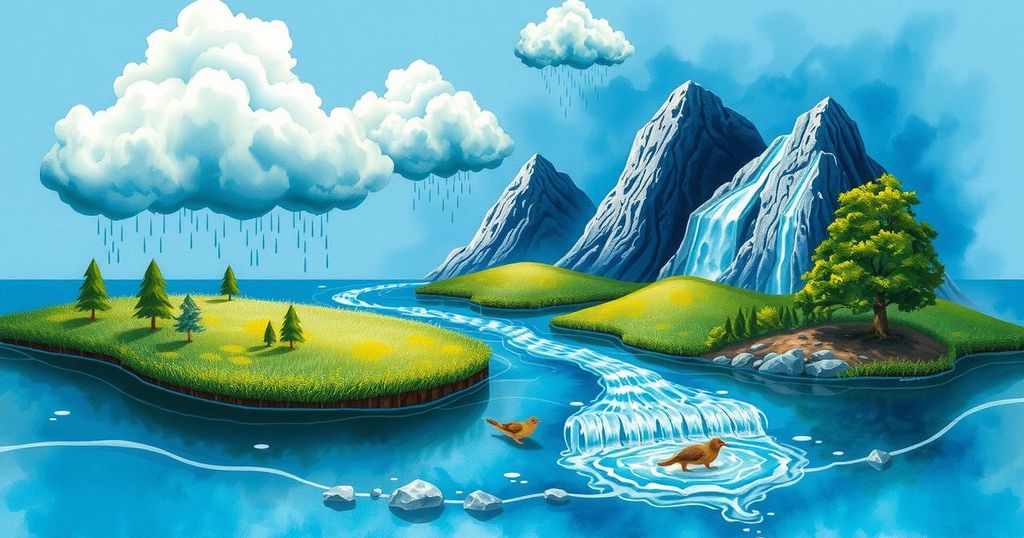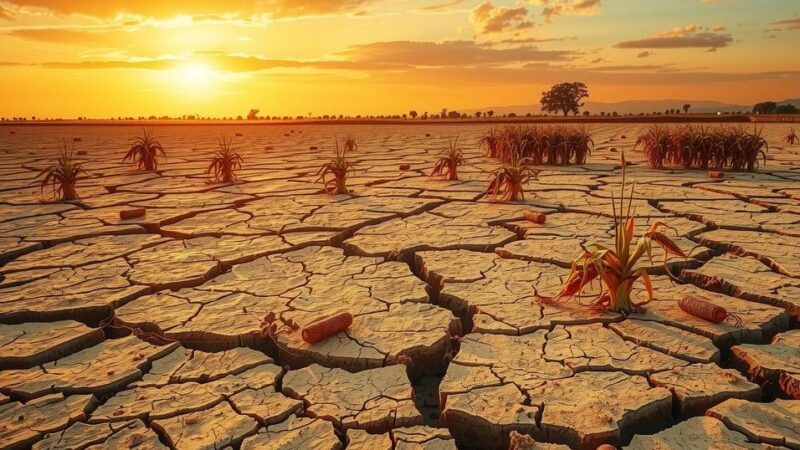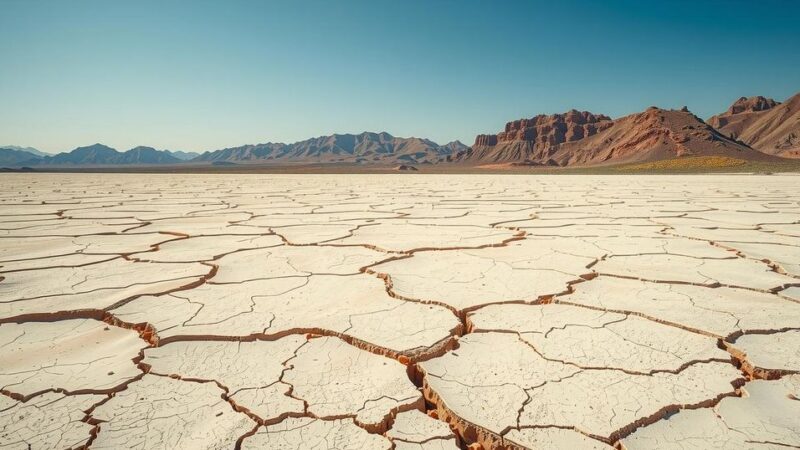Recent global flash floods are linked to disruptions in the Earth’s water cycle primarily driven by climate change. Hylke Beck emphasizes the effects of increased temperatures that allow for greater moisture retention, leading to extreme rainfall and drought conditions. Urban planning and natural climate patterns further influence these phenomena, resulting in imbalanced weather conditions and challenges for agriculture.
Recent flash floods worldwide, from Argentina to Saudi Arabia, highlight the disruption of Earth’s water cycle, attributed largely to climate change. While urban planning and resource management issues contribute, temperature increases are significant. Hylke Beck, an expert in earth science, states that warmer air retains more moisture, with every degree of warming allowing the atmosphere to hold approximately seven percent more water.
This increased moisture leads to heavier rainfall during storms. For instance, Saudi Arabia has experienced a temperature rise of 2.1 degrees Celsius from 1979 to 2019, nearly three times the global average. However, not only does this result in more intense rainfall, but it also exacerbates drought conditions due to accelerated evaporation and reduced soil moisture, affecting agriculture and contributing to desertification.
Increased evaporation may lead to heavier rainfall in certain areas, while others become increasingly dry, creating unequal distribution effects. Changes in land use, such as deforestation and urbanization, worsen these disparities by altering water flow and evaporation rates.
Natural climate patterns like El Niño and La Niña further complicate these effects, influencing rainfall distribution. Beck concludes that climate change disrupts the balance of the water cycle, leading to more extreme weather conditions and unpredictable climate patterns, challenging global weather systems.
Climate change significantly affects the Earth’s water cycle by increasing air temperatures, leading to more moisture retention and extreme weather patterns. This results in both heavier rainfall in some areas and severe droughts in others. Urbanization, land use changes, and natural climate phenomena exacerbate these issues, creating an increasingly unstable climate that challenges agriculture and water management globally.
Original Source: www.arabnews.com






